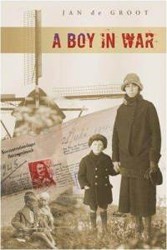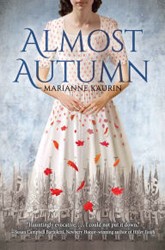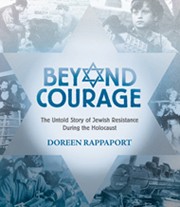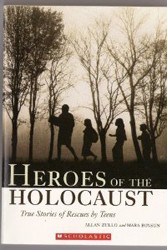Stark and unflinching, Drawing the Holocaust brings us into the mind of Michael Kraus, a Czech preteen caught in the jaws of the Nazi regime and imprisoned in three different concentration camps. Kraus was separated from his parents and beaten, starved, tortured, and humiliated. Nevertheless, when he emerged at the end of the war at age 15, he found that he still had the will to live and the strength to do so.
After being liberated from what he calls “an empire of electric fences, suffering and death — a hell on earth,” Kraus immediately began to write and draw the story of the last three years of his life. He tells us he had always kept a diary; as a child he found it was a way “to unburden myself of my own worries and grief.” But now, after the loss and devastation of the war, he had a darker objective: to overcome his hatred for the people who murdered his parents.
Today Michael Kraus is a retired architect living in Massachusetts, the father of two daughters and the grandfather of four. More than 70 years after his liberation from the camps, he has decided to share his story with the world. He hopes that young people will read his book so that they can “understand events that, from the perspective of the current day, might seem almost unreal.”
He is very likely to achieve his goal. The book is haunting in its unselfconscious observations of suffering and trauma in Theresienstadt, Auschwitz, and Mauthausen. The images are reproduced without editing, and add layers of meaning to the accompanying text. The soft pencil drawings complement and extend the mature, well-written diary entries, and remind us in their simplicity that the author is a mere teenager. Not only is this story valuable and authentic, but also it personalizes the enormous events of the Holocaust.
Unlike many memoirs, this one was written when the author’s memories were fresh and immediate. Kraus began writing as soon as he could find some scraps of paper and a pencil, as he was recovering from typhus in a former German air force barracks that had been converted into an infirmary for liberated camp survivors. Tenderly translated from the original Czech into English by Paul Wilson, this is a useful historical record as well as a moving memoir.
Secondary-school educators who want to use this book in the classroom will be able to obtain supporting materials at no cost from the Center for Holocaust and Humanity Education of Cincinnati, Ohio.
Related Content:
- Tahneer Oksman: “Where Should the Story Begin?” The Worlds of Holocaust Graphic Memoirs
- Internal Dialogue: Anne Frank Unbound and Justin Bieber
- Helen Maryles Shankman: When a Picture Speaks a Thousand Words
Linda F. Burghardt is a New York-based journalist and author who has contributed commentary, breaking news, and features to major newspapers across the U.S., in addition to having three non-fiction books published. She writes frequently on Jewish topics and is now serving as Scholar-in-Residence at the Holocaust Memorial & Tolerance Center of Nassau County.





